Expert's Rating
Pros
- Good 10Gbps light-duty performer
- Affordable
- Clever, flick-to-open Type-A design
Cons
- Slows drastically during very long writes
- Plastic-y tactile sensation
Our Verdict
Though not the drive you want for super-long writes, this thin, flick-to-open USB stick from Kingston is aces for small file sets.
Price When Reviewed
This value will show the geolocated pricing text for product undefined
Best Pricing Today
Price When Reviewed
$80 for 1TB
Best Prices Today: Kingston DataTraveler Max 10Gbps USB stick
Increasingly, vendors are upping the ante when it comes to the performance of their USB sticks. It’s now commonplace to see 10Gbps, as employed by the Kingston’s DataTraveler Max reviewed here.
I have no doubt that a USB4 thumb drive will soon make an appearance. Okay, maybe not soon, but they will arrive at some point. For now, I can make do with 1 gigabyte-per-second transfers.
Read on to learn more, then see our roundup of the best external drives for comparison.
What are the Kingston DataTraveler Max’s features?
The DataTraveler Max is a 10Gbps (USB 3.2) USB stick/SSD sporting a Type-A connector. It’s around 3.63 inches long, 0.85 inches wide, and a mere 0.32 inches thick. Weight is hardly worth mentioning at 0.5 ounces.
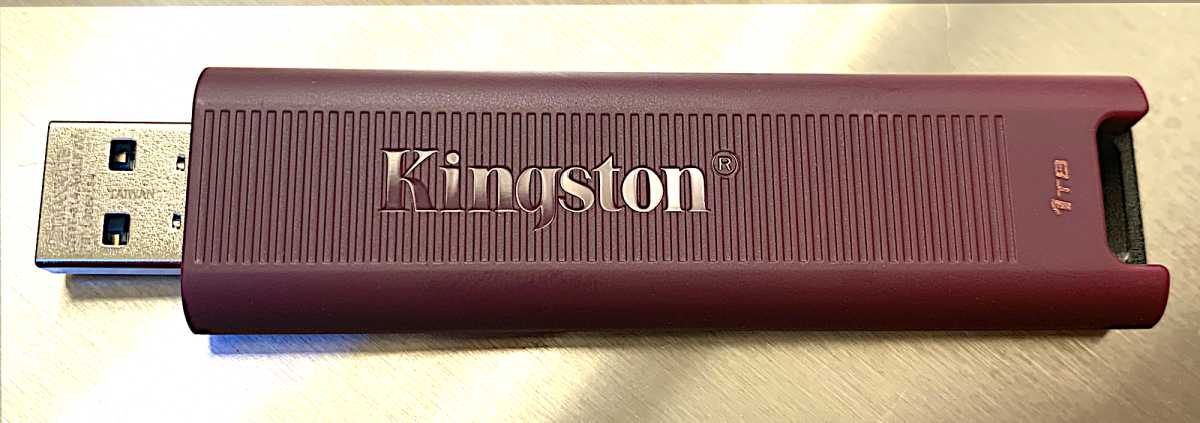
The 1TB DataTraveler Max that Kingston sent me was black with a maroon sliding cover that clicks into place. As the cover is only a clamshell, when you slide it forward to cover the Type-A connector, it leaves the bottom half of said connector still exposed. Basically, don’t drop it into water.
Also, the light weight and hard material makes the drive feel a bit flimsy, though it held up well in my hands-on evaluation. Beyond that, I quite like the design.
Because you push on the actual drive portion for insertion, there’s no frustration of a lever or switch slipping.
I also got a kick out of holding the drive between my fingers and my thumb, and using my thumb to slide the cover back and forth. Much like you’d flick a Bic. (Look it up.)
How much does the Kingston DataTraveler Max cost?
Though the DataTraveler Max retails at $38 for the 256GB capacity, $68 for the 512GB, and $120 for the 1TB, I found it on sale on Amazon for $32.95, $56.39, and $92.43, respectively. At one point, the 1TB version was as low as $80 on Amazon — that’s pretty darn affordable for a 1TB external SSD, USB stick or no.
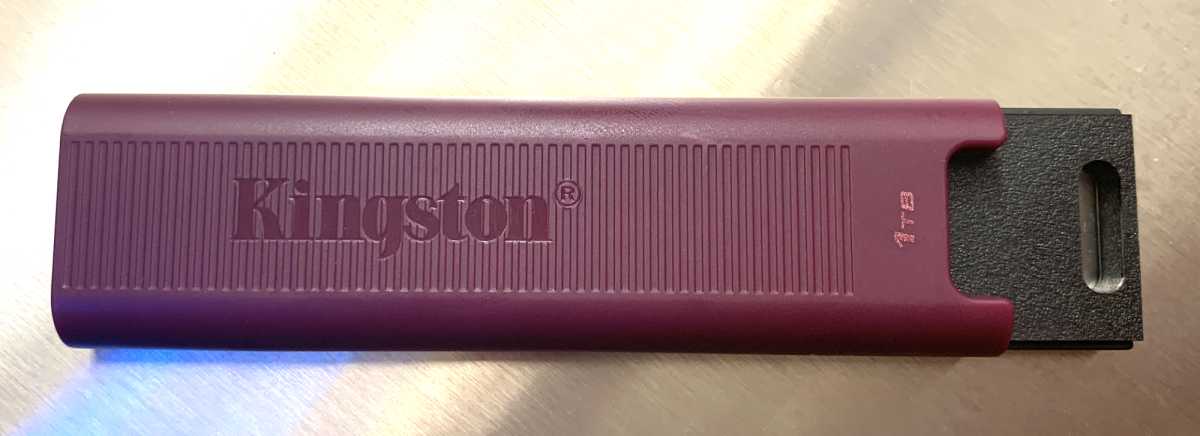
But as always, look around. There are competitors such as the significantly newer and faster-with-large-files PNY Pro Elite V3 that are priced even lower than the DataTraveler Max’s sale prices.
Because of that, I’m guessing that Kingston’s sale prices on this item won’t disappear anytime soon. (Don’t hold me to that.)
I got a kick out of holding the drive between my fingers and my thumb, and using my thumb to slide the cover back and forth. Much like you’d flick a Bic.
How fast is the Kingston DataTraveler Max?
For light duty, the Kingston DataTraveler Max compares nicely to other 10Gbps USB drives. But it’s absolutely not the drive for long writes. While it placed 63rd among all drives and fourth among eight thumb drives in overall performance, it finished dead last in our 450GB write (69th place). It wasn’t close either — almost 9 minutes behind the next worst performer. Ahem.
In CrystalDiskMark 8 the DataTraveler Max performed well below par with the 64GiB data set we normally employ while writing. Much like the Teamgroup X1 Max. Maybe stop naming your USB sticks “Max”? Just saying, folks.
With CrystalDiskMark 8 using a much smaller 8GiB data set, the DataTraveler Max performed more on par with its peers. I’ve included both results here, but the 64GiB results are the official ones. Note that AS SSD 2.0 showed the drive with very good numbers using its 10GB data set.
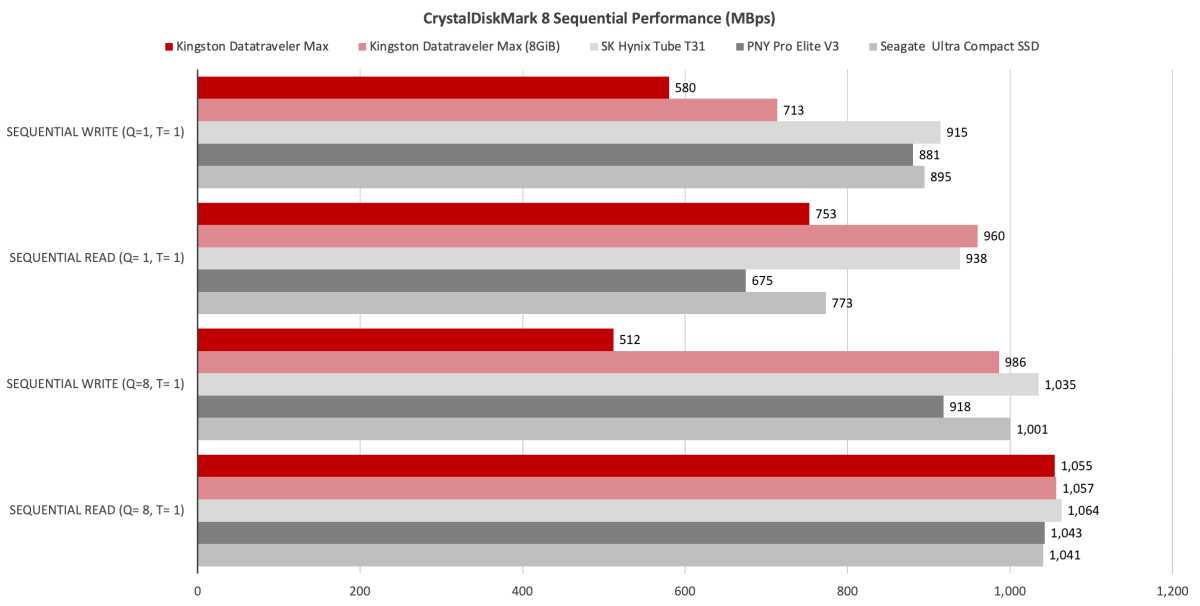
Random performance was much the same story — good, but not on pace with the most excellent SK Hynix Tube T31.
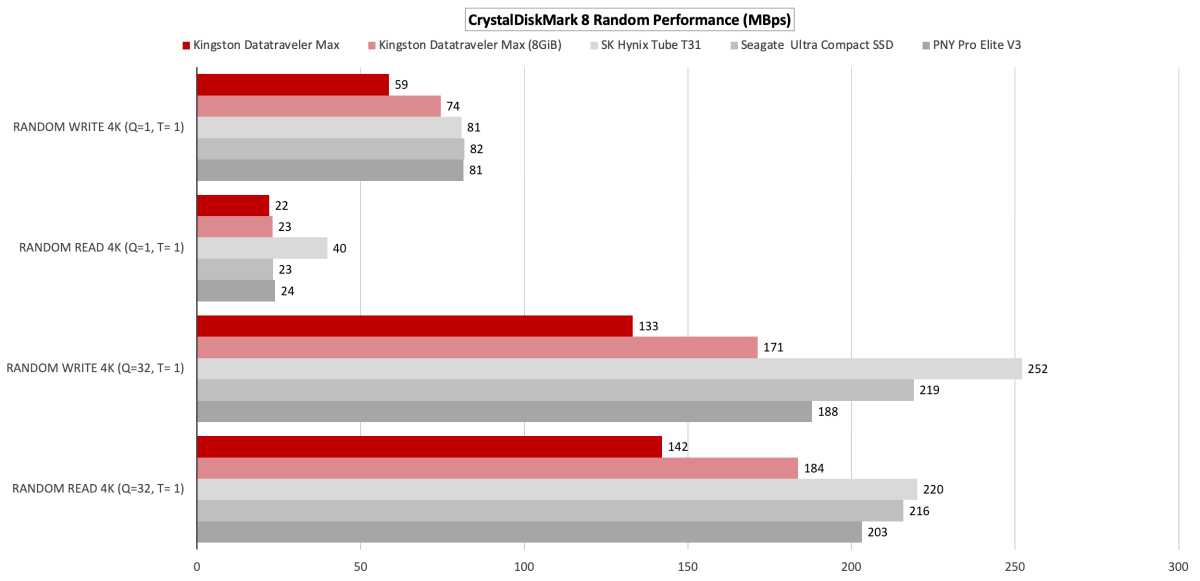
The DataTraveler Max turned in decent, if not top-tier 48GB transfer times.

Where the DataTraveler Max really fell apart was in our 450GB write test. Not to pile on, but again, it finished dead last in this test, at 69th place, almost 9 minutes behind the next worst performer.
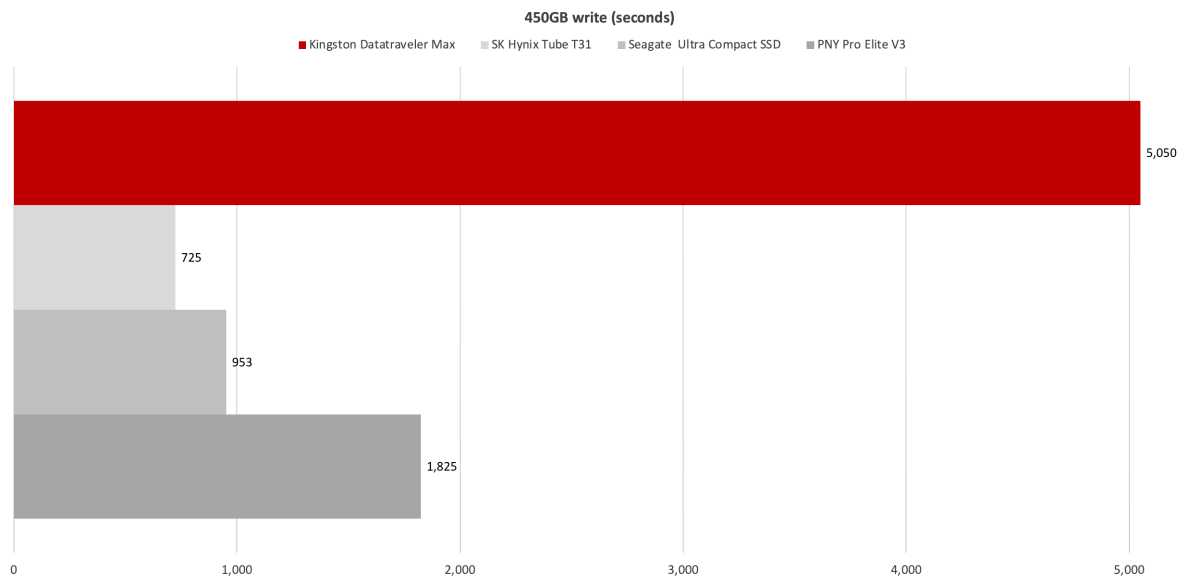
Below you can see where the issue with the Kingston DataTraveler Max’s long writes falls. It slows to around 80MBps (Yowser!) once it runs out of secondary cache. That almost surely means that the NAND is QLC. I just complained about the PNY Pro Elite V3’s 1,800 second write time, so you can guess how I feel about this one.
Inicia sesión para agregar comentarios
Otros mensajes en este grupo.

The Philips Hue app has grown in complexity over the past several yea

Though the Steam Deck has been imitated by major PC industry players

A senior Intel executive said Tuesday that Intel has begun building m

The best way to ensure your laptop never dies on you—whether you’re w

Just having a password set on your PC in Windows 11 isn’t a sure way

Okay, bargain hunters, settle in. This is probably the best deal I’ve

Is your mouse suddenly registering two clicks even though you swear y
